i Have this half-wave rectifier circuit. i have placed a current probe on the input in order to measure the waveform of the supply current. The waveform is shown below. My question is what effect does this waveform have for example on a step-down transformer?
-
Please show where the transformer would be connected in your circuit. If you open the edit window for your question, there is a tool for creating schematics. – Math Keeps Me Busy Feb 06 '22 at 02:37
-
@MathKeepsMeBusy The transformer would be connected before the diode – Frantisek Balaz Feb 06 '22 at 02:56
3 Answers
No simulations, I've not attempted to simulate transformers with saturation yet, but Measurements! Unfortunately the measurements are into a diode + resistor, not the diode, capacitor of the OP, but the results are interesting anyway.

simulate this circuit – Schematic created using CircuitLab
I am using a fairly cheap 50VA transformer, 240v to 24v, so turns ratio N of about 10, and the nominally 50 watt load of a Weller soldering iron on the secondary. The input voltage is measured via a 1000:1 resistive divider. The input current is measured through a 1 ohm shunt in the neutral, into a unity gain diff-amp to drive the scope safely. The secondary load voltage is measured by a standard 10:1 scope probe. All oscillographs show mains input voltage in light blue, primary input current in yellow, and secondary voltage (and so load current as the load is pure resistive) in pink. The nominal mains voltage is 240v rms, about 330v peak.
The first picture if of the transformer off load. The core is being run somewhat into saturation by the input voltage, drawing a roughly 100mA blip around the zero crossings, which is where the core runs to maximum flux. This is in quadrature to the input voltage, so little real power is being drawn.
The second picture shows the situation with the rated 50 W load connected.
The load voltage follows the input voltage, via the scale factor N. The input current substantially follows the load current, but the core saturation current draw can still clearly be seen as a lump around the zero crossings. I chose polarities such that the input voltage, input current and load current were all in phase. The input current is peaking to about 300mA, 1/Nth of the load current peak as expected.
The third picture shows what happens when a silicon diode is placed in series with the load.
During the first positive half cycle, the load diode is blocking. There is no load voltage, and initially no significant primary current. While the input voltage is still at its peak, the primary input current starts to grow. This indicates that the core is going into saturation. It is being saturated earlier than it was off load, which indicates that the core did not start the cycle at maximum negative flux.
As the input cycle continues, the magnetising current builds to more than 500mA, larger than the normal load current was, but still a long way short of being dangerous. In this particular case, the rms input current when using the rectified load is about 2% higher than for the normal load, the input fuse and primary winding won't even notice. The secondary rms is lower, so overall, the transformer will run cooler.
As the negative half cycle starts, the output voltage goes negative. For a substantial part of this cycle, the primary current is still positive, whereas the load current is negative.
Finally as the cycle continues, the primary current comes into phase with the load current. If you look in detail at the primary current at the end of the load conduction phase, you will see it follows the shape of the secondary current closely. The saturation bulge that was visible in the normal load case is not present here. This confirms that at this point in the cycle, the transformer core has not reached maximum negative flux.
Let's see some simulations recreating that behaviour.
- 158,152
- 3
- 173
- 387
-
I just replied to Math Keeps me Busy above, before you posted this, and the current you show seems faaaairly close to the black trace, only up-side down. But I doubt the values. – a concerned citizen Feb 06 '22 at 15:53
-
@aconcernedcitizen The shape of the BH curve will strongly affect how a transformer saturates. Trying to match traces without knowing the core parameters is unlikely to be too successful. I'm using a different load to the OP anyway. – Neil_UK Feb 06 '22 at 16:03
-
I know, that's why I tried to use Magnetics' data for 48 Alloy (magnesil is too squarish, and LTspice does not allow same Br/Bs). Even so, the link from which I used the numbers says it should sustain 240 VA, and this one saturates for a load as low as 5 VA. Still, it's interesting to see that the curves agree, in general. – a concerned citizen Feb 06 '22 at 16:11
With a circuit like this:
simulate this circuit – Schematic created using CircuitLab
The current in the primary will look something like this:
The exact waveform will depend upon the characteristics of the transformer (for example, the magnetization current, the leakage inductance, the winding resistance etc.).
The voltage across the primary is fixed by the power supply. The voltage induced in the secondary is proportional to that induced in primary. In this model, the two are nearly exactly proportional.
However, the voltage at the terminals of the secondary will not be exactly the voltage induced at the primary because the current in the transformer causes resistive voltage drops in the windings as well as inductive emf in the leakage inductance.
Here is a slightly more complex model which accounts for these effects, and the associated secondary terminal voltage.

The components were chosen to make the distortion of the secondary terminal voltage easily visible. An actual secondary terminal waveform may show more or less distortion due to the non-sinusoidal transformer current.
- 18,947
- 3
- 19
- 65
-
Is your simualtion handling tranformer saturation? Please plot the voltage waveform along with the current. WHen I can, I'll dig out my actual scope measurement pics. – Neil_UK Feb 06 '22 at 06:18
-
@Neil_UK Unfortunately, I don't know how to model core saturation effects in CircuitLab. However, I have added the primary and secondary voltage waveforms, both a set corresponding to the original circuit, and also one with exaggerated resistance and leakage inductance to make their effects more visible. – Math Keeps Me Busy Feb 06 '22 at 12:35
-
A quick setup for the Chan core based on [this](https://energie.ch/dimensionierung-von-transformatoren/) shows [this](https://i.stack.imgur.com/80exl.png), but I don't vouch for the choices of `Br=1.2 Bs=1.1 Hc=40`, because the trafo ends up [well saturated](https://i.stack.imgur.com/IyrZf.png). – a concerned citizen Feb 06 '22 at 15:37
The Transformer current has a big DC component as well as lots of harmonics .The DC can cause transformer saturation because mains power transformers have only a very small effective air gap and use high pearmability iron .
- 14,235
- 2
- 27
- 65
-
A DC component in the applied _voltage_ will cause a mains power transformer to saturate. However, I don't believe that a DC _current_ will cause saturation. The magnetic flux in the core is approximately equal to the net current through the windings. Current in the secondary "induces" an equivalent, but opposite current in the primary. The _net_ current in a transformer that determines the flux is just the _magnetizing_ current in the primary. – Math Keeps Me Busy Feb 06 '22 at 13:13

